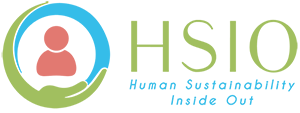The notion of the triple bottom line — financial, environmental, and social — and “ESG” are now part of the vernacular. ESG investing — strategies that hold companies’ accountable for their environmental, social and governance impact — grew to more than $30 trillion in 2018, boomed in 2020, and could reach $50 trillion over the next two decades as consumer tastes shift and investors demand more transparency.
Our Human Infrastructure is at risk
Most ESG-focused investments and corporate social responsibility initiatives have assessed the firm’s impact on the environment and society, few have measured its impact on its employees. More generally, the SEC is currently taking a closer look at disclosures.
In addition, while regulators punish environmental polluters, no sanctions exist for a poorly-run organization’s pollution of the individuals they employ.
Even in the best of times, society bears the brunt of the externalities of bad management through rising inequality and mental health disorders.
In a pandemic that has rendered employees increasingly psychologically and economically vulnerable, poor management and policies are a recipe for deep distress, poor productivity, and loss of life.
In 2011 the Sustainability Accounting Standards Board helped investors and companies agree on sustainability topics and measures. A decade later we need a different set of standards to put humanity first in our economy and society in order to:
· define how to measure the impact of the companies we support with our human, financial, and attention resources;
· hold companies accountable for reporting their investments in the well-being, upward mobility, and growth of their employees; and,
· and support organizations that improve collective well-being as investors and consumers.
The Trillion-Dollar Taboo
At the same time, now that we have broken the trillion-dollar taboo and it is easier to have discussions about mental health in general and at work, we have gone from feast to famine in the world. Companies (and venture capitalists and PE Firms) are rushing and investing — thousands of people analytics companies and mental health apps are flooding the market — many with no scientific basis. Before investing, companies need to reflect on what they are maximizing and how they will measure the return on their investments.
We come to realize that a sustainable Human Infrastructure is as critical as an environmentally sustainable infrastructure. But how we do invest and measure our impact?
It is very difficult to gauge employee well-being and tailor strategies and benefits without being explicit about our goals. To be as impactful as possible for companies and their constituents, making mental health a strategic imperative should be a careful and reflective process that involves top leadership guidance and bottom-up input. What methods can organizations use to develop a human sustainability index tailored to their corporate needs and employees’ needs?
Back to first accounting principles
First, we need to create a new language of business to ensure that public and private organizations are rewarded for investments in humanity. In the current accounting treatment, investments made into programs to support employees and promote equity are a cost on the Income Statement. At the same time, liabilities that may result from lacking those attributes (which include lost productivity, legal claims, costs of support programs) will not be recognized on the balance sheet and considered remote.
Romans used accounting to assess “the moral position of a citizen in relation to the others in the same community.” In accounting, we refer to shareholder equity, making the balance sheet a “store of fairness.” In Summa de arithmetica, geometria, proportioni et proportionalita, Luca Pacioli saw promise and wisdom in double-entry bookkeeping as a tool to make sure that its users made balanced decisions. He and other religious accounting writers noted that wisdom lies not at the extremes but in the middle: in medio stat virtus. We have come a long way — in the wrong direction.
Social and mental health risks must be considered as a potential liability during and after the Pandemic. If the liability is probable, then it should be recognized. Investing in programs to diminish that risk and support employees reduces the liability and create investment into an organization’s reputation with each employee through the license to operate. Doing so would be going back to Pacioli’s intent and reconciling economic equity with shareholder equity — in its purest and oldest sense of the word.
The Human Sustainability Index
Second, we need a tools such as the Balance Scorecard but focused on social indicators. Since the 2018 publication of Compassionate Management of Mental Health in the Modern Workplace, we have been working to define a Human Sustainability Index (HSI) that can provide actionable insights to decision-makers regarding how firms nurture or damage Human Capital. It involves a management system, rating approach, and accounting standard:
1. Processes, tools, and advisory support helping managers and their teams to jointly develop such a process of evaluation and “certification.” This reflection is to be accompanied by a process in the spirit of the Balanced Scorecard (a strategic planning and management system to identify and track leading performance indicators). It is iterative and complex and forces organizations to focus on values in practice and distinguish what are measures of effectiveness versus measures of performance. The Table below offers sample questions and dimensions.
2. A new accounting method so that investments in employees’ mental health and growth opportunities are accounted for as assets versus costs. In the current accounting treatment, investments made into programs to support employees are a cost on the Income Statement. At the same time, liabilities that may result from not investing in approaches that support employees’ mental and economic health (lost productivity, legal claims, costs of leaves, health expenses, etc.) will not be recognized on the balance sheet and considered remote.
3. A certification process to report policies and outcomes to give customers and investors a guide for their actions. Much as the U.S. Leadership in Energy and Environmental Design (LEED) program provided a rating system to evaluate the “environmental performance of a building and encourage[s] market transformation towards sustainable design,” an HSI could help investors and consumers drive transformation towards sustainable employment.
As is the case for climate change, tackling the emotional and social inequities climate change requires that citizens, employees, experts, investors, corporations, and non-governmental organizations rethink how they operate and how their actions impact others. The crucible of 2020 has provided the unique opportunity to begin to put things right, to ensure that societies emerge more equitable, sustainable, and resilient. We cannot do it without definitions, metrics and informed choices.
Until we have an index, we have options
- For investors: How much weight do you assign to firms’ impact on their workforce when making investing decisions? Which type of metrics would you want to assess for making such a decision? How would you evaluate firms’ Human Capital performance? How would you value your Human Return on Investment (HROI)?
- For consumers: Are you currently considering in your buying decisions the impact of the firms on their employees? Which type of metrics would you want to assess for making such a decision? How would you evaluate firms’ Human Capital performance? How such an evaluation would impact your purchases going forward?
Table: HSI Sample Reflection Questions for Companies
– What data would you want to collect and what current tools (employee engagement surveys, disability leave data) could be combined? Can some, such as the performance evaluation process, be tweaked to ask key questions: One might be, “do you feel that your manager cares about your well-being?” What biases might be reflected by the tools and policies and benefits your firm uses?
– What kind of data would you want to collect from EAPs and other entities and how would you evaluate it? A great EAP with a low single-digit utilization rate is not an investment, it is a waste. So is a fancy on-site gym that people don’t use because of a work environment that does not let people take the time to use it.
– What are the macro and micro signals you would track? How would you be clear about what they mean? Take the example of mental health leaves in a firm — more than average could signal a problem in the company or could suggest that its employees feel comfortable getting support and taking the time to heal. How do you balance trade-offs?
– How could you use an HSI as an early warning signal for yourself and your teams? We are all part of a broader system with performance expectations. How would you go about making sure that such an index would be in service to the employee and not pose a potential career risk? Employees need to understand that much like tracking carbon monoxide keeps them safe, so does tracking indicators of an emotionally toxic workplace.
Authors Bahia El Oddi and Carin-Isabel Knoop research and write about human sustainability and partner with others committed to it. Photo credit to the amazing Ellen Feldman (elfel8@icloud.com * www.ellenfeldman.net * www.WeWhoMarch.org).




